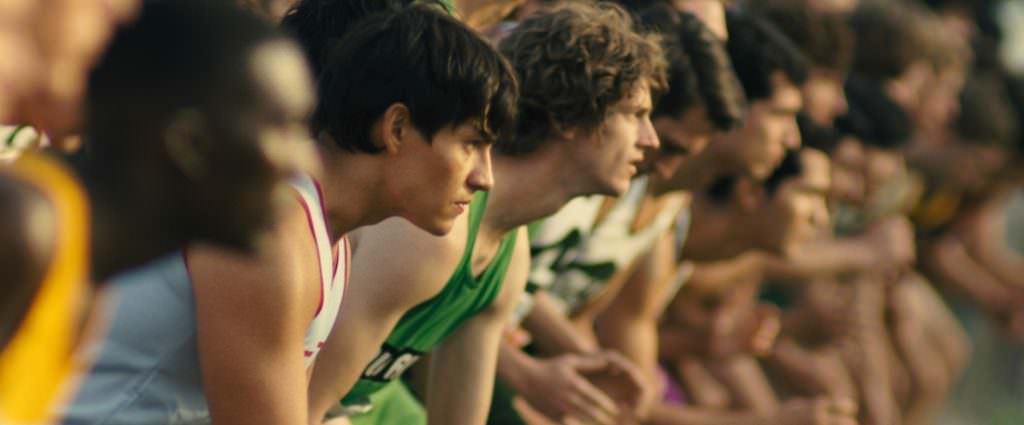Director Niki Caro Finds her Place in McFarland, USA
Niki Caro is one of the more astute, thoughtful directors working today. Whether she’s adapting a novel about a peasant winemaker in 19th century France (A Heavenly Vintage, 2009), or fictionalizing the account of the first major successful sexual harassment case in the U.S. (North Country, 2005), Caro’s ability to get inside the lives of very different people and to contextualize their plights with just the right amount (and the exactly right kind) of detail is obvious to anyone who watches her films.
It was Caro’s second feature that got the native New Zealander the attention of Hollywood. Whale Rider was centered on Paikea, a young Maori girl, which Caro turned into a breathtaking and compassionate account of one girl’s life, exploring a culture few Americans know a thing about with her signature blend of curiosity and honesty. On first blush, Caro’s latest feature, McFarland, USA, a Disney film no less, might seem far afield from her previous work, but a closer look reveals that McFarland has all the trademarks of Caro’s work, and as the director said, Disney backed her vision, knowing full well that to do so meant releasing a picture that wouldn’t look like any Disney films in recent memory.
Based on the true story of coach Jim White (Kevin Costner), a irascible man likely at the tail end of his career who finds himself coaching a bunch of high school cross country runners in the predominately Mexican-American town of McFarland, Caro turned what could have been a paint-by-numbers underdog story into something deeper, richer, and, ultimately, moving. We spoke to Caro about her keen sense of place, what she looks for in her films and more.
So how did you end up directing McFarland for Disney?
I was speaking to Disney about something else, and I’d been looking for a project for a long time that had the same qualities as Whale Rider, and I recognized as soon as I read the backstory for McFarland that this film was probably it. Here was a story that was true, based in a real community, based on real people, and it offered me a way I could work as I had on Whale Rider, which is to work with the community and with the people. Basically, all I do is light up what I think is beautiful.
And what did you find beautiful when you set to work on this film?
The big connection between this film and Whale Rider is obviously is, once again, the culture is not my own, and what I think is that being an outsider gives you a very privileged point of view to speak about stuff that doesn’t get spoken about a lot, and to do so without an agenda.
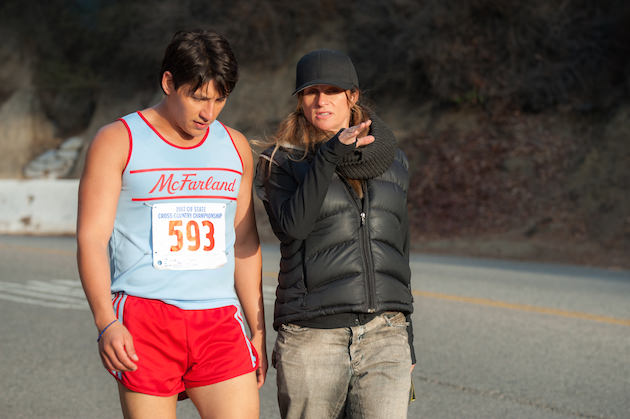

McFarland USA felt, to me anyway, like a very persuasive argument for compassionate immigration reform without actually getting into politics at all. How’d you strike that balance?
Paradoxically, the way I work when it’s not my own culture is I try to be very accurate and faithful to the way lives are lived and not impose my will. I was very keen to portray the Mexican American culture, but I realized that we made a very American movie, a profoundly American movie that happens to have a lot of Mexicans in it.
Can you elaborate on that for me?
There’s nothing more American than wanting a better life for your children, and working hard to give them that. And that’s all you see there, and I hope that comes through in the movie.
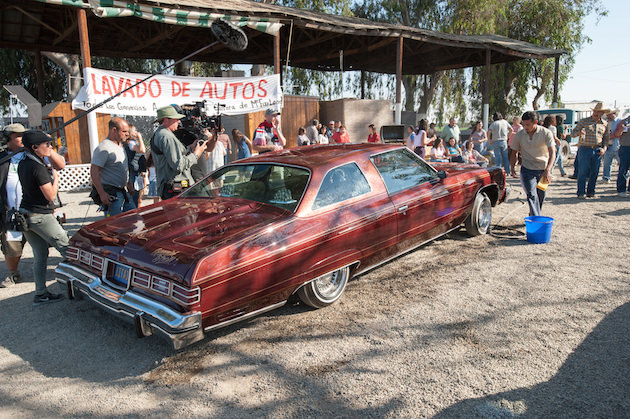

Your casting was especially poignant, even in the smaller roles every character seems fully alive.
With the boys we did a really big casting search, a wide search, and anybody could come along, and that took about eighteen months on and off. We found three of those kids actually in McFarland, which was wonderful. For the rest of the roles, I set a really high bar for casting. I love casting, and it was a deep search. Anybody that’s taking up space on the screen, for me, they have to be the best. Whether they’re in a tiny role or a big role, they have to be the best. We had a huge cast, and we had to take the time to find the right people. It’s a bonus if they’re also great to have a beer with, which in this case they were.
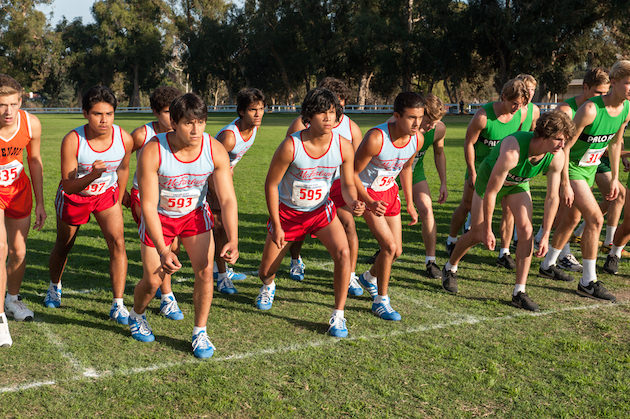

One of the hallmarks of your films is how right they look and feel, the attention to really tiny details that accumulate into the sense that you’re really in the world being depicted. What is your process for production design?
It’s really simple, it’s from going there and spending time in the community with eyes open, ears open and mouth closed. I’ve worked with Richard Hoover, the production designer, and I have a lot of faith in his work, we worked together for the first time on North Country and I saw that he has a really strong love for working class people, and that really comes through. I give him visual examples for things that I like, and make it possible for him to spend time in the community. When I started working on this the first thing I did was go up there with Jim White and his wife Cheryl, and I didn’t write a word until I became intimately involved with them. We suffered a delay of about a year, so I had a lot time, but when we went back to film, we had very little time. When I got the call in New Zealnd, I was told we were ready to go.
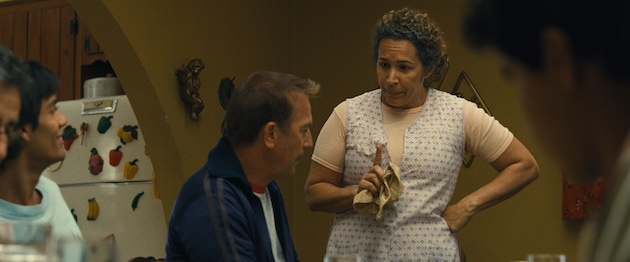

The film defies a lot of the conventions one would expect from an underdog story.
I think that comes for how we filmed this form a more kind of instinctive place. To be perfectly frank, the sports story is not what attracted me to it, it was the spirit of the people, the pride, the community. I wasn’t want so much nailing down the beats of the sports story as much as I was enjoying spending time with the people. I always try to look for humor, and those things intimately clustered, and when you cast appropriately and well, then there’s a lot of room to play and let things happen. That first race in Palo Alto at the lake, they’re going to the starting line for the first time, the props department had a table full of cookies, so it’s very easy for me to have coach White whisper to Ramiro [Rodriguez, who plays Danny Diaz], Why don’t you get one of those cookies before you hit the starting line, and that works, and it’s really universal. We were shooting really fast, so we don’t play the gag and set up the gag and get a big close up, it just happens in a medium close up and it gives you this feeling like this is just what happens. That’s the thing with Hollywood genre movies, they’re pretty amazingly made, a lot of them, but they’re made to a formula, one that works, and this deviates a little from the formula in a good way.
Can you give me another example of where you deviated from the formula?
There’s a moment where those boys from Palo Alto walk past the McFarland kids and they’re taunting them, and the McFarland kids just take it, they don’t react at all. I’ve seen this film with so many Mexican Americans, and ever time, they’ve told me that they expected something to happen in that moment, but it didn’t happen. You expect these kids to fight back, but they don’t, they don’t do that, it’s all the more heartbreaking that they don’t. It’s more true to the way life is. They don’t want to bring attention to themselves anymore than they already do by being Mexican-American.
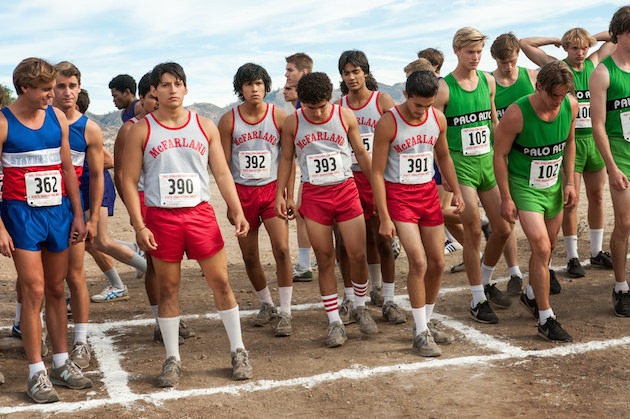

How’d you feel once you started editing it?
I’ve always worked with David Coulson, and when we finished shooting it was three and a quarter hours long. I liked it, I could see there was a good movie in there, but I couldn’t believe it, part of me was so shocked that we’d made something for Disney that looked so un-Disney. What Disney makes now, very successfully, is very beautiful, big, tent-pole movies. If you think about Maleficient, Cinderella, Into the Woods, they are very, very beautiful movies, and when I saw McFarland, I loved the way it looked, but I couldn’t believe Disney had allowed me to have this vision, and they really backed me, they loved the look of the film, they really allowed this film to look as authentic as it does. McFarland, regardless of what it looks like, has inherently the values of the brand, and I love that about it. I think Sean Bailey is a fine and astute filmmaker, and he cares about filmmaking, he gets a kick out of filmmaking, and so I think this was probably a nice project to have in the midst of these bigger films.
How did you walk the line of staying true to the real story of coach White, without making this a film about a white man (with the last name of White, no less) coming into a Mexican-American community and saving them?
We were very conscious of not making a white savior movie, and you could have with the material, but it was really important for us that he be a flawed guy who was ultimately redeemed by the community. You see him become a better coach, a better father and a better man through his interaction with this place and these people. You’ve got somebody like Costner, the king of this genre, and he could have phoned that sucker in, but he’s a really honorable guy, and a committed actor, and maybe more importantly, those boys uncovered his humanity. He was so generous with them, like a father figure to to them, he got a big kick out of them. They were completely irreverent with him, and what you see on the screen is his humanity really strongly, and his humility, and that was growing really organically with what was happening on set and off set.
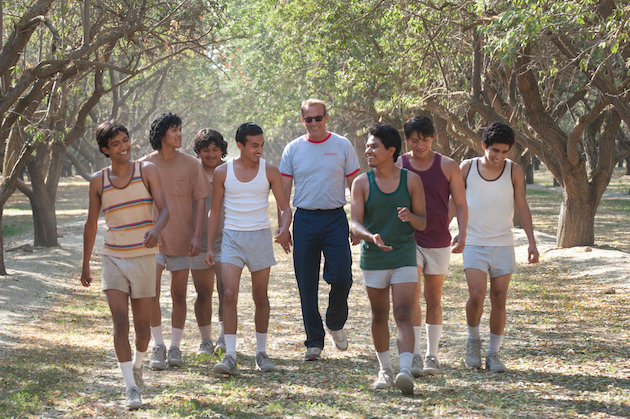

Off topic here a bit, but as there is a lot of necessary talk about the need for more diversity both in front of and behind the camera, what do you feel as a successful female director about it?
I’ve got to say also that there’s a strong part of me that fights against the idea that I’m a woman director, because it suggests that I’m different to other directors, particularly with McFarland, it’s a boy film with a male lead and seven male supporting roles. I knew going into making that movie that I was the best director regardless of gender. I was better for this movie than any other director, I knew it, and I know it to this day. My being female is not relevant. Where it becomes relevant is the sensitivity and the gentleness that comes through in the storytelling. I don’t think that’s specifically female, many of the great male directors have the same qualities, they have to be sensitive and communicative in order to bring a great story to an audience. I ask myself all the time, how I can change it, how can I make it better? Because there’s so many female filmmakers I know personally that are so gifted. But the fact is I have no power to change it, except if I can make movies that are commercially successful, that will help, that are critically successful, that would help. I hope that by the act of doing it well, I open the door for the next female director.
Featured image: McFARLAND, USA..L to R: Johnny Sameniego (Hector Duran), Victor Puentes (Sergio Avelar), Coach Jim White (Kevin Costner), and Damacio Diaz (Jamie Michael Aguero). Courtesy Walt Disney Studios.



